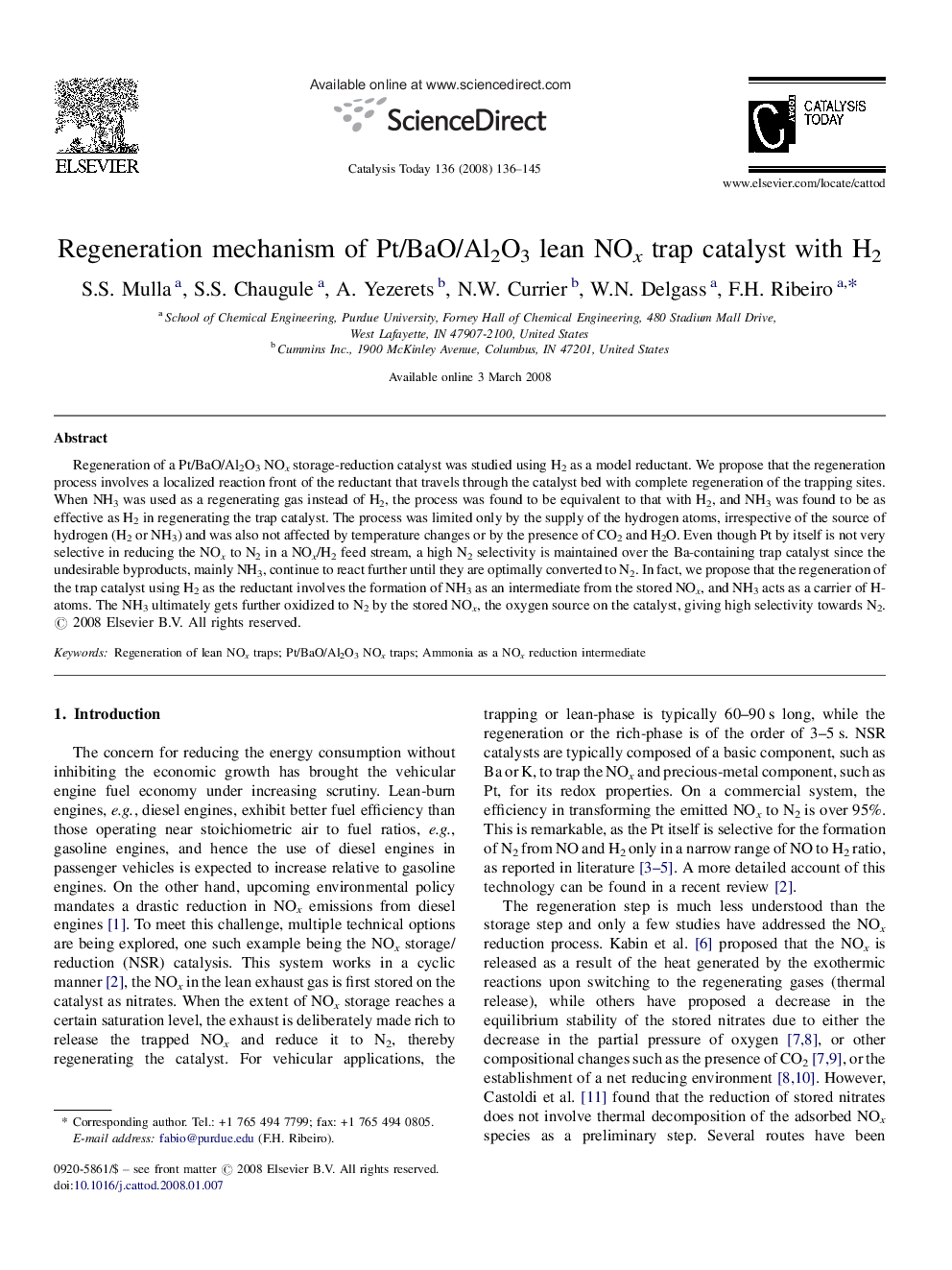| Article ID | Journal | Published Year | Pages | File Type |
|---|---|---|---|---|
| 57645 | Catalysis Today | 2008 | 10 Pages |
Regeneration of a Pt/BaO/Al2O3 NOx storage-reduction catalyst was studied using H2 as a model reductant. We propose that the regeneration process involves a localized reaction front of the reductant that travels through the catalyst bed with complete regeneration of the trapping sites. When NH3 was used as a regenerating gas instead of H2, the process was found to be equivalent to that with H2, and NH3 was found to be as effective as H2 in regenerating the trap catalyst. The process was limited only by the supply of the hydrogen atoms, irrespective of the source of hydrogen (H2 or NH3) and was also not affected by temperature changes or by the presence of CO2 and H2O. Even though Pt by itself is not very selective in reducing the NOx to N2 in a NOx/H2 feed stream, a high N2 selectivity is maintained over the Ba-containing trap catalyst since the undesirable byproducts, mainly NH3, continue to react further until they are optimally converted to N2. In fact, we propose that the regeneration of the trap catalyst using H2 as the reductant involves the formation of NH3 as an intermediate from the stored NOx, and NH3 acts as a carrier of H-atoms. The NH3 ultimately gets further oxidized to N2 by the stored NOx, the oxygen source on the catalyst, giving high selectivity towards N2.
